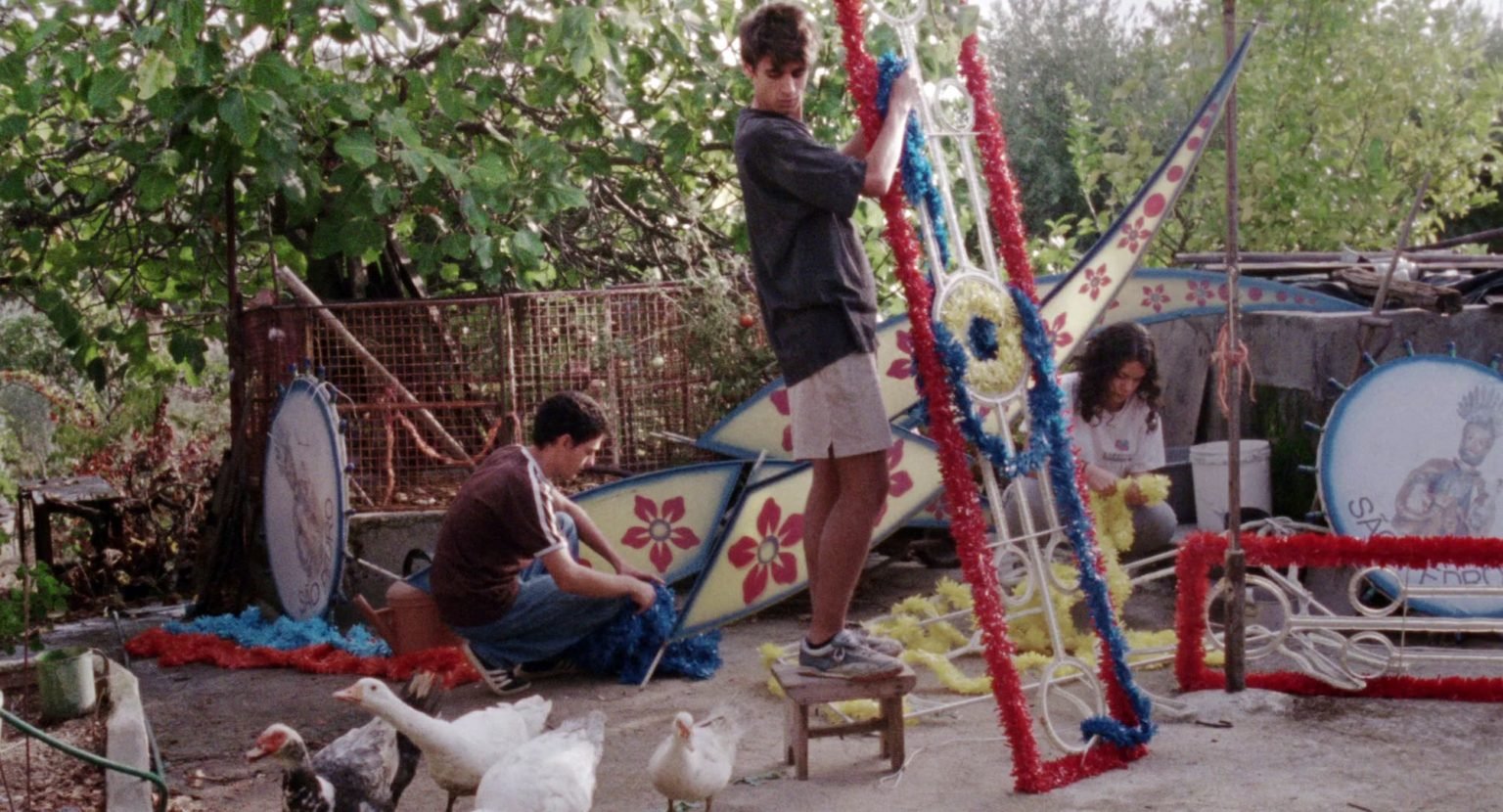3 Short Films from David Pinheiro Vicente
Gothenburg
Sun 1 Oct
15:15 — Hagabion
-
PRODUCTION YEAR: 2016
GENRE: Documentary (short-film)
DIRECTOR: David Pinheiro Vicente
COUNTRY: Portugal
FILM DURATION: 20 min
AGE LIMIT: 12
-
The sensual energy and sculptural nature of the teenage body in the perfect world of tennis.
-
LANGUAGE: Portuguese
SUBTITLES: English
-
PRODUCTION YEAR: 2020
GENRE: Fiction (Short-film)
DIRECTOR: David Pinheiro Vicente
COUNTRY: Portugal, France
FILM DURATION: 15 min
AGE LIMIT: 12
-
In a rural and declining Portugal, a young farm worker witnesses a strange sexual confrontation. That night, he faces his mother who asks him to kill the lamb they are raising for the local Catholic festivities. But the young brother does not understand. A storm is approaching.
-
Description text goes here
-
PRODUCTION YEAR: 2018
GENRE: Fiction (short-film)
DIRECTOR: David Pinheiro Vicente
COUNTRY: Portugal
FILM DURATION: 21 min
AGE LIMIT: 12
-
It’s summer, a boy and his friends go to the river. On the ride there, a story is told about a man and his pet snake that tried to eat him. The boy falls from a tree trunk and gets hurt. A girl follows him. A couple kiss each other, another boy explores the woods and a third one just lays by a tree eating a peach.
In four chapters, the heat and the humidity of the forest unravel desires among them.
-
Description text goes here
Review
This screening presents the (so far) complete filmography of the young Portuguese director David Pinheiro Vicente. Born in 1997, David is one of the most solid promises of the brand-new Portuguese cinema: his graduation film premiered in the Berlinale, his first professional film made was selected to compete in Cannes, he is currently completing a medium-length film and he has already secured funding for his first feature.
The first two films presented today were made at Lisbon's Film and Theatre School (Escola Superior de Teatro e Cinema), where the director graduated from. Following the curricular structure of the school, Pinheiro Vicente made a documentary in his second year and a fiction film in his third and final year. These two films are thus a reflection of his academic path and echo each other.
Simão is an exercise in observation that is somewhere between Douglas Gordon's artistic piece, Zidane.
A 21st Century Portrait (2006), and João Pedro Rodrigues' commissioned film for Guimarães European Capital of Culture, O Corpo de Afonso (The King's Body, 2012). In other words, it proposes an almost conceptual look at how one may observe the practice of sport as a performative and choreographic art and, without contradiction, finds in that same gaze the fascination of desire, filming the athletes' bodies as living statues (according to the typology of Hellenic sculpture of amputated, fragmented and faceless torsos). To the point where the tennis players are interchangeable, since the "Simão" of the title is not necessarily just made up of Simão Alves' body, but of a series of bodies (feet, legs, thighs, ankles, hips, chests, arms, hands...) of the various athletes who train with him. There is, in that sense, a dimension of fetishistic collage, a work of composition about the ideal and unattainable body.
Where the Summer Goes (chapters on youth) extends this investigation, but in a "fictional mode" and under the cloak of nostalgia of an already lost youth.
Once again, this is a collection of images of young bodies, but instead of (re)discovering dance movements in sports, is instead a (re)staging of small everyday gestures, trying to recompose the rhythms and physicality of a day at the beach among friends, where not much happens.
However, unlike Simão's visual sparseness (except for the final sequence with its rural parenthesis), Where the Summer Goes is heavily laden with religious symbolism – anticipating the next film – with various references to Eden, its serpent and its apple/peach. Whereas "Simão" was a single entity made up of several bodies, here the confusion of limbs (see the very cluttered first shot of the film) doesn't create a figure, but rather announces a distended and fluid understanding of parts, of boys’ and girls' bodies, of animals and plants, of wind, river waters and sun. As my friend Carlos Natálio put it, "the bodies spread out in a serene rather than sensual way".
Likewise, in The Lamb of God, Pinheiro Vicente creates a main character that works as his alter ego, Diogo, who lives among angelic children and failed gown-ups.
Desire makes him grow up, despite all of the childhood delights that still sing him lullabies.
David (Pinheiro Vicente) also films between delicacy and dirt, i.e., between haunting sensations and the smell of blood. Then, everything gets stirred, elliptically and metaphorically, in a web tangled with fragments of what may be dreams, memories or visions (like the web of sexual innuendos connecting all the adult characters). At the center of the film is a tension between death and guilt (which end up complementing each other in ritualistic sacrifice).
Ricardo Vieira Lisboa
À pala de Walsh






